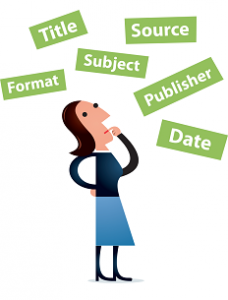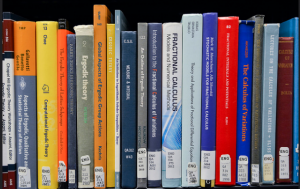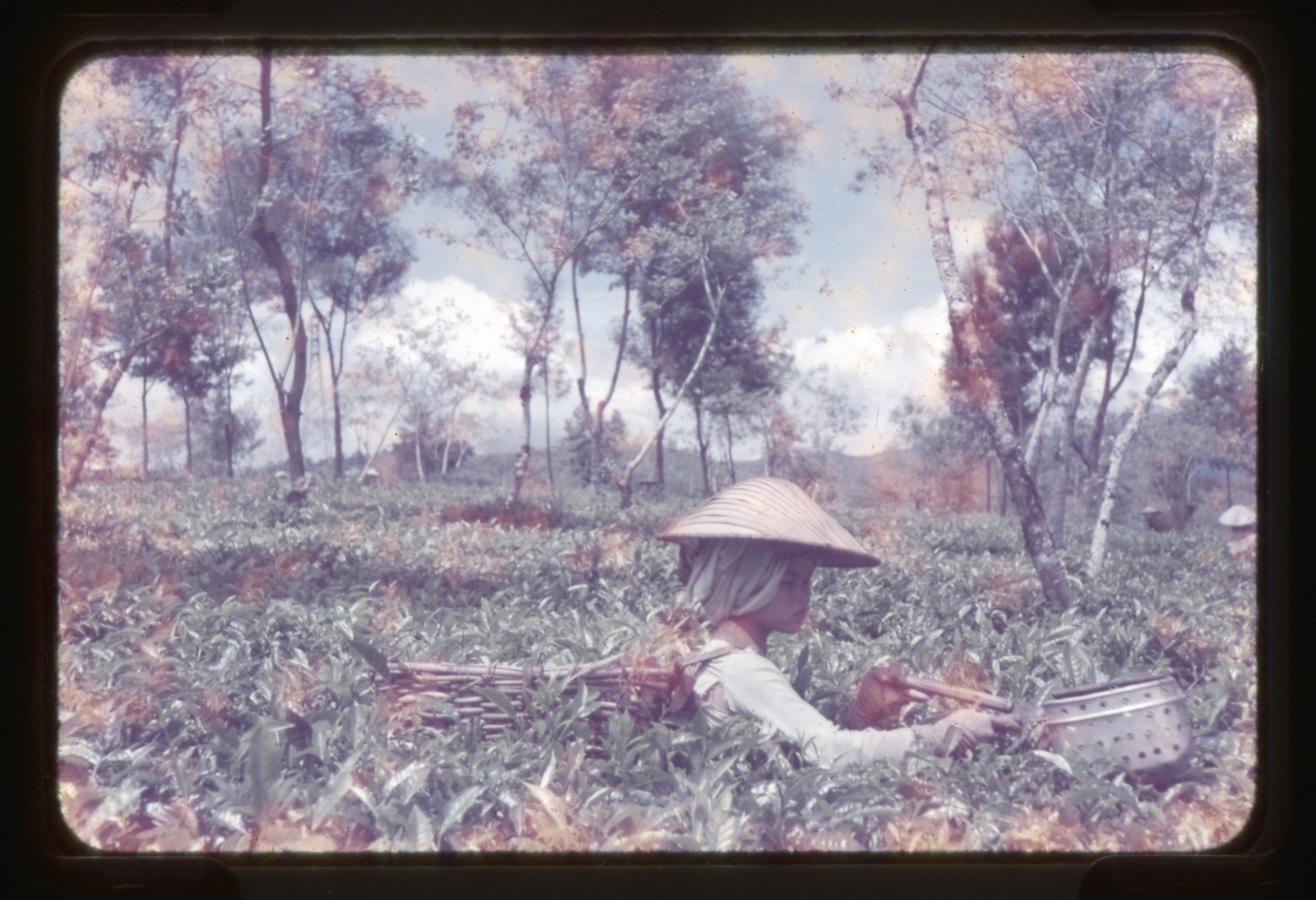DHSS Assignment Guides
Metadata Creation/Archival Description
Creating Metadata as a DHSS Assignment
Featuring work from Wendy Alejandra Medina De Loera‘s exhibit “The Making of a Digital Archive, By a Non-archivist.”

Metadata is “data about data.” They are pieces of information like location, date, time, format, and source, which allows digital items, such as photographs and documents, to be found and used again. You could also think about metadata as archival description for digital items. Creating metadata involves students tagging and describing digital materials. This process can then illuminate the process that goes into making materials available in digital spaces.
Metadata creation may not seem like the type of work that could replace a short essay, but getting your students to thoughtfully develop metadata for digital items can be a rich, critical, and analytical task for students to think about how and what can available in digital spaces. It can also allow students to think about the ways theory can be applied to different practical situations both inside and outside academia.
Summary
Description:
- The organization and description of a digital item
Possible tools/technologies:
- WordPress
- Word
- Excel
Elements of Process:
- Identify material
- Discuss the subjectivity of metadata, perhaps using a reading such as K.J. Rawson’s 2017 article “The Rhetorical Power of Archival Description: Classifying Images of Gender Transgression”
- Create, or have your students create, a mechanism for recording metadata
- Create and discuss metadata
Size of assignment:
- Small
Difficulty:
- Easy. The tech element of this assignment is minimal. The “digital” element of this assignment is getting students to work through the ideas associated with organizing and accessing digital materials, not in working with specific digital technologies.
Metadata is “data about data.” On digital items, metadata provides information such as location, date, time, format, and source that allows items to be found and used again. Without metadata, we would have to browse multiple items rather than directly search for the one(s) we were looking for, because we would not have any specific information attached to the item. Attaching specific information to a digital item means we are able to do keyword searches to find and access that item again. Metadata thus frames our lives in the digital world by shaping objects and items with language and ideas that inform what and how we can access.
Think, for example, about a photograph we take on our phones. We could easily find a specific photograph if we remember the date we took it. If your location services were on, you could also find that image through a mapping tool your phone provides. If you have tagged people in your photograph, you could also find that photograph by searching for a person in the photo. If you’ve created specialized folders or had “favourited” a photograph, you could go right to those folders and find that photograph that way too.

However, if you are looking for a photograph that you took at the library, for example, which had a book in it that you wanted to find again, how could you easily find that photo? You could go through each picture from that library visit, but this could be both time and labour intensive. But, if you “tagged” that picture with information related to that book – maybe the word “book” or the name of the book itself – you could find that photograph very quickly by searching keywords or tags ascribed to this photo. This “tag” is metadata; the data about the data – the keywords about your photograph.
Your phone already creates a set of metadata on the photographs you take – date, place, perhaps person – and you can also create metadata by creating folders or tagging people, but unique elements of a photograph may get lost without the active creation of specific metadata.
The specificity of what can be identified through metadata is why understanding metadata is so important, especially in our digital world. How we find and access digital items – not just photographs on our phones but archival documents and images as well – is based on the metadata that is assigned to them. Similar to archival description, metadata may seem objective, but the ideas and concepts assigned to items are developed by people for other people and thus are bound by subjective understandings of what an item is, what it shows, and what values it has. See archivists Wendy M. Duff and Verne Harris’ article “Stories and Names: Archival description as narrating records and constructing meanings” found in Archival Science for discussion of these ideas from an archival perspective.
Thus, metadata creation – or archival description – is an interesting task for your students to engage in because of how it demonstrates the layers of subjectivities we bring to an item or object. You may tag your library photo with the name of the book, but someone else may look at the photo and see different things: other books, the general subject matter, the Library Congress organization, or the colour blue. Which metadata are more correct? Which information best describes what is there? Which description will have the greatest long-term value? Also, how would our experience at the library shape what we see and tag as important? How would our perception of future needs or past recollections frame how this item is categorized in the present?
This example can expand outward to get your students to think about the creation and limits of what is knowable, and how that interacts with what is digitally available and accessible. Ask your students to question whether a creator or the subject(s) of a digital document/image would develop the same metadata as an archivist, historian, sociologist, political scientist, or student? Which metadata would be more correct? Why? What if you were a sociologist with a critical race theory background – would your metadata be the same as a sociologist with a queer theory background? What if you were a political science student using material to understand the operation of feminist theory in policy – would you be able to find those materials if the metadata associated with them were based on Marxist theory? How general should metadata be? How specific? In the example of the photograph of the book, should the metadata identify a general “book” or the specific name of the book? If you forget the name of the book, you can no longer find it with the specific title, but a general category of “book” may bring up too many results.
All of these questions demonstrate the layers of questions that your students can work through (but not necessarily answer) by engaging in a metadata assignment. These questions can also prompt classroom discussion and be an opportunity for crowdsourcing metadata in the ways that are similar to crowdsourcing transcription.
When framing the assignment of metadata creation with 21st-century competencies like critical thinking, communication, collaboration, and creativity and innovation as found by the Ontario government’s international review of 21st-century competencies, each task can be transformed to have your students think about the role they are playing in developing space for greater access to materials and thus the responsibilities they hold when creating, organizing, and/or presenting materials to the public (similar ideas are discussed in the Transcription and Data Visualization assignment).
While a metadata assignment can be engaged on its own or as part of a larger digitization project, digitization does not have to be part of this assignment. You can get your students to engage in a metadata assignment with already digitized and catalogued materials and focus solely on metadata creation. You can also connect with the Library to see if there are materials in their archives and special collections that could benefit from collaborative partnerships with your class.
Either way, after materials have been chosen for this assignment, either by you or your students, introduce your students to the Dublin Core, a metadata standard, and get them to develop and create a tracking mechanism, such as a form or spreadsheet, to ensure all the central datum is captured. Students can also “tag” the metadata they identify worthy of note on a website or even through Word or Excel.
Remember that your students may identify aspects of the document or image that you would not identify as important. Rather than correcting them, have your students explain and rationalize their choices. Again, the emphasis on an experiential assignment such as this one is process as well as product. Students should articulate their process of metadata creation as a way to make evident the process of knowledge creation. Like with the Archives assignment, I direct you to K.J. Rawson’s article “The Rhetorical Power of Archival Description: Classifying Images of Gender Transgression” (2017) based on the Digital Transgender Archive and the Human Sexuality Collection at Cornell University Library. This article can be a starting point for your students to think about the power and process of metadata creation and archival description and how it functions to shape knowing and knowledge.

In our project, Wendy Alejandra Medina De Loera created an exhibit that highlighted the process of creating an archive. Developing metadata was a large part of this work.
In her exhibit, Wendy narrated how she developing metadata as it related to creating titles and descriptions of her photographic slides. However, she also demonstrated how the metadata could change if she adopted different perspectives to read the slides, such as a feminist or postcolonial perspective.
Project member Denise Challenger also wrote about the collaborative and thoughtful process of metadata creation in her essay for this Instructor’s Guide, “Metadata for Thought.” As she outlined, these discussions were central to the archives and the exhibits students created in our project.
Metadata creation suggestions for your students
- Have students develop metadata for a photograph they have taken. How would they want/expect a future academic to use this photograph? What metadata can ensure this photograph is found to do this work?
- Show a photograph or document during class and, independently, have students identify three to five subject tags they would ascribe to this photograph/document. Collect all the words and have students sort them into categories. Initiate a discussion about the similarities and differences of these subject tags as a way to demonstrate the ways knowledge is constructed.
- Have students ascribe metadata to a found or unknown photograph (a photograph with no identification, such as the ones found on Instagram accounts @PhotosObscura, @HouseofMirthPhotos, or @SaveFamilyPhotos) using a class reading to guide the tags ascribed to the photograph
- Compare the metadata ascribed to an archival image or document by the class, with the metadata ascribed to the same image or document by a librarian and/or archivist. What is captured and/or missing from the “official” metadata that is captured and/or missing from the interpretation from the class?
- Work with the Library to identify if there are materials in their archives and special collections that needed metadata assigned. There may be an ongoing project that could benefit from the collaborative partnership of your students.

